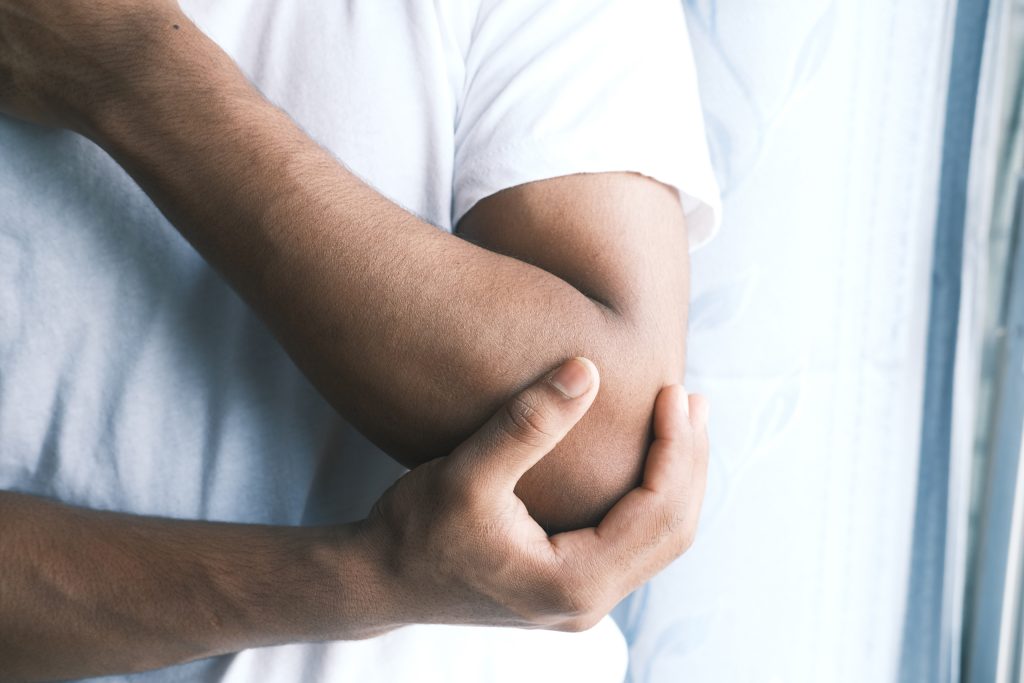Intra-articular reconstructions of the elbow joint
The contact forces on the articular surfaces of the elbow joint correspond to two to three times the body weight during normal everyday activity and seven times the body weight during high dynamic loading. The inner part of the elbow joint is a hinge joint in which even a small unevenness of the joint surface can lead to wear and tear and subsequent
arthrosis
and thus to pain . The outer part of the elbow joint is a wheel joint in shape. Again, the unevenness of the joint surfaces is essential and causes a restriction of movement. Changes, or steps on the articular surfaces of the elbow joint are therefore perceived negatively by the patient.

What are the causes of unevenness of the articular surfaces of the elbow?
The cause of unevenness of the articular surfaces of the elbow joint is usually poorly healed fractures, where the fracture has spread to the joint. Basically, three types of problems occur in these cases. First, after a fracture, there may be an unevenness (step) on the joint surface, which subsequently leads to wear of the joint associated with pain. To prevent wear and tear of the elbow, the original fracture line must be restored by so-called osteotomy, the corresponding fragment must be set up correctly and fixed in the restored position.
Secondly , the unevenness of the joint surface resulting from a fracture may be so pronounced that it prevents movement in the elbow joint, which patients find very uncomfortable. The solution in these cases is similar, i.e. restoration of original fracture line, establishment of the corresponding fragment and its immobilization is restored.
Third, smaller fragments of the articular surface may die along with the cartilage after a fracture and a defect may develop. The solution can only be a transplantation of part of the joint surface (large chip of bone and cartilage) from a donor. Based on imaging (CT), the approximate size of the bone defect should be determined and the appropriate bone graft with cartilage should be ordered accordingly. A transplant of the required size may not be immediately available and the patient must then wait for a suitable donor.
We are experts in this field!
We use a specific score to evaluate our results in complex cases. The score for pain is significant as well as a score for daily function. We have not observed any significant complications after these difficult procedures.
We can say that a significant unevenness of the joint surface is a major problem for the elbow joint. Just as with other large joints, it is necessary to actively manage pathology. Recoveries are more of a rarity in these cases. However, the results after grafting and intra-articular osteotomies are good.
These are very delicate procedures, reserved only for the most experienced orthopedic surgeons who specialize in elbow surgery .